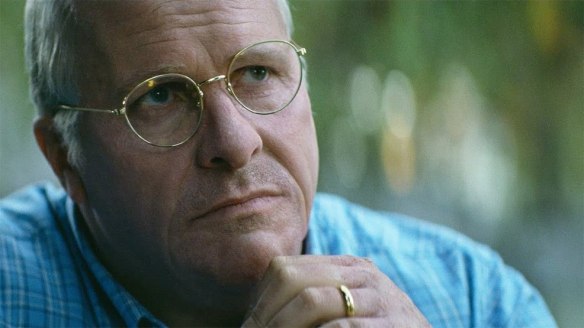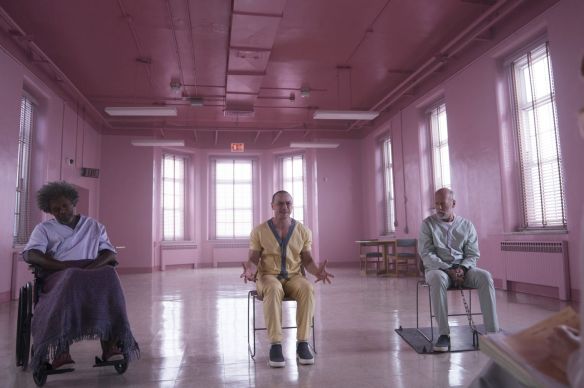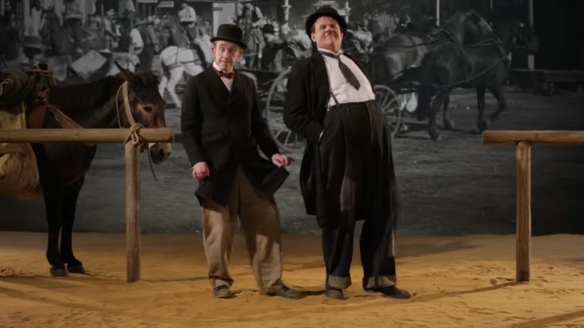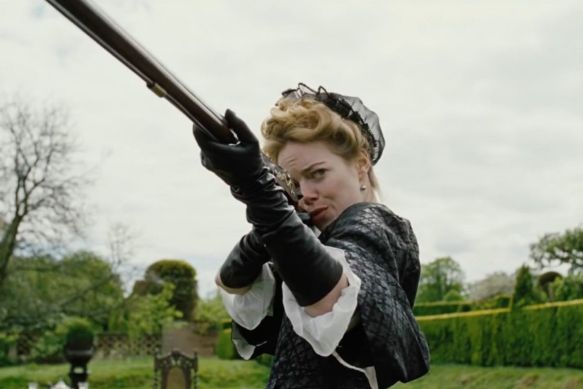
The opening caption in writer/director Adam McKay’s Dick Cheney satirical biopic Vice points out that although the story we’re about to watch is based on truth, given that Cheney was such a secretive leader, it’s hard to be sure of the facts. Still, the caption goes on to say, “we did our f***ing best”.
Funny yes, but although Vice features fine performances and is darkly entertaining throughout, this disclaimer does not give McKay a licence to play as fast and loose as he does. This is clearly a film with an agenda (what political film isn’t) and amid its determination to paint the Machiavellian Dick Cheney in the worst possible light (understandable), it overreaches somewhat towards the end by attempting to imply that conservative points of view are stupid, and liberal points of view are well-informed. I laughed, but the reality is there are both stupid and well-informed conservatives, and stupid and well-informed liberals. Not to mention corruption on all sides of the political spectrum.
That said, the film is still worthwhile, primarily for Christian Bale’s astounding performance in the lead. Bale is ably supported by the likes of Amy Adams as Cheney’s wife Lynne, who is quite bone-chilling at times, although a sequence where they both quote Macbeth is a little too on-the-nose, even for a satire like this. Elsewhere the supporting cast includes strong turns from the likes of Steve Carrell as Donald Rumsfeld and Sam Rockwell as George W Bush Jr, the President, whose strings Cheney pulled to remarkable effect, if this film is to be believed.
All things considered, despite warnings for swearing, disturbing scenes and a few bloody images, Vice is a good watch and recommended with the afore-mentioned caveats, to those who enjoy an entertaining political satire. One scene involving a waiter played by an uncredited Alfred Molina is darkly hysterical, and worth the price of the ticket alone.


 The Corset concerns Dorothea Truelove, a young, wealthy and beautiful woman whose charitable work involves prison visits. Here she meets Ruth Butterham, a teenage seamstress awaiting trial for murder. Dorothea is intrigued to test her theories in the field of phrenology, to see whether the shape of a human skull really can shed light on why certain people have a tendency to commit crimes. However, she is also faced with an alternative possibility. Is it possible to kill with needle and thread? Ruth claims that her crimes were caused by a supernatural force inherent in her stitches.
The Corset concerns Dorothea Truelove, a young, wealthy and beautiful woman whose charitable work involves prison visits. Here she meets Ruth Butterham, a teenage seamstress awaiting trial for murder. Dorothea is intrigued to test her theories in the field of phrenology, to see whether the shape of a human skull really can shed light on why certain people have a tendency to commit crimes. However, she is also faced with an alternative possibility. Is it possible to kill with needle and thread? Ruth claims that her crimes were caused by a supernatural force inherent in her stitches. The Silent Companions is a ghost story set in a decaying country mansion. Recently widowed Elsie is sent to await the arrival of her baby in her late husband’s crumbling country estate. Resentful servants and local villagers are openly hostile, and Elsie only has her husband’s awkward cousin for company. However, Elsie then discovers a room containing a diary written two centuries previously, and a sinister painted wooden figure bearing an uncanny resemblance to herself…
The Silent Companions is a ghost story set in a decaying country mansion. Recently widowed Elsie is sent to await the arrival of her baby in her late husband’s crumbling country estate. Resentful servants and local villagers are openly hostile, and Elsie only has her husband’s awkward cousin for company. However, Elsie then discovers a room containing a diary written two centuries previously, and a sinister painted wooden figure bearing an uncanny resemblance to herself…







